How to Determine the Number of Nodes, Loops, Branches & Meshes in a Circuit?
What is Node, Branch, Loop and Mesh in an Electric Circuit & How to Identify them?
To solve and analyze complex electric circuits and networks using network theorems, we must know about the Nodes, Branches, Loops and Meshes in an electric circuit and network.
In the following tutorial, we will discuss a Node, Branch Loop and Mesh and their role in an electrical circuit. After that, we can determine the number of nodes, branches, loops and meshes and apply the circuit solving techniques to simplify the complex networks and circuits.
To do so, let’s follow the following simple steps to identify one by one as follows.
Consider the following simple electric circuit in fig-1 which contains on 7 components or elements.
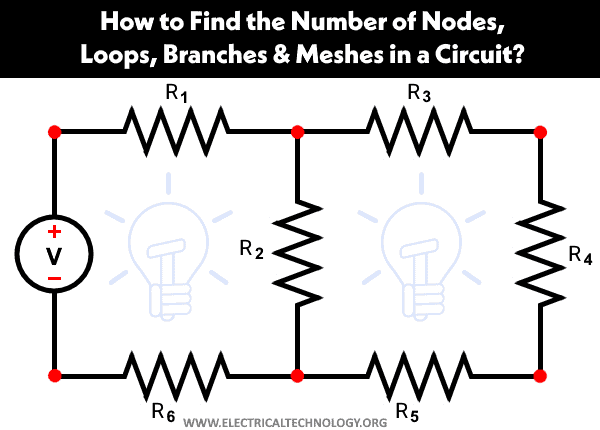
Node
A point or junction where two or more circuit’s elements (resistor, capacitor, inductor etc) are met is called Node. In other words, a point of connection between two or more branches is known as a Node.
Finding Nodes in an Electric Circuit
After redrawing the above circuit in fig-1, it becomes the below equivalent circuit. Now, the number of nodes can be easily identified as shown in fig-2 below which has 6 numbers of Nodes.

Branch
That part or section of a circuit which is located between two junctions is called the branch. In a branch, one or more elements having two terminals can be connected. In other words, It may have any two terminals with a single component such as a voltage source, current source, resistor etc.
Finding Branches in an Electric Circuit
The circuit in Figure-3 has seven numbers of branches, namely, a “V” voltage source and the sex numbers of resistors. All the branches are highlighted as a blue-colored horizontal bar over it.
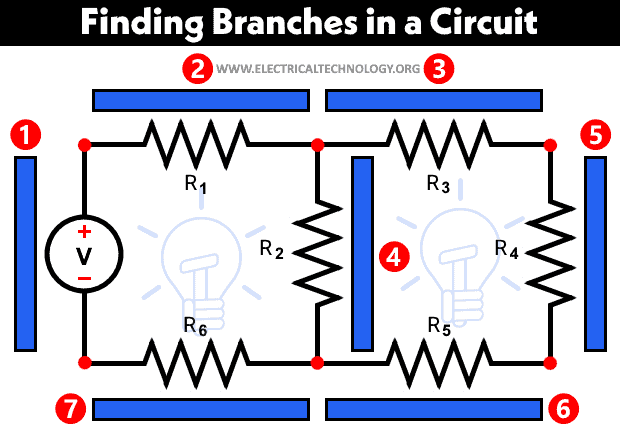
Loop
A closed path found in a circuit with more than two meshes is known as Loop i.e. A loop can have multiple meshes but a single mesh cannot contain a single loop. In simple words, mesh is a closed path in a circuit.
Finding Loops in an Electric Circuit
Loops can be found by the following fundamental theorem of circuit and network topology
l = b – n + 1
Where:
- l = Number of Loops
- b = Number of branches
- n = Number of nodes
Therefore, there are 3 numbers of Loops in fig-4.
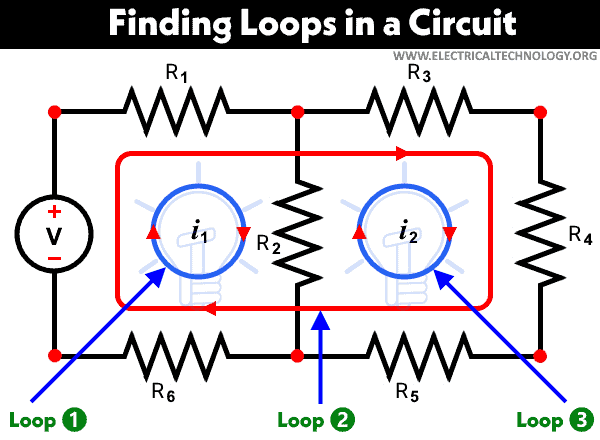
Mesh
It is a closed loop in which there is no other loop within it. Or any path that does not contain any other path is called a mesh.
Finding Meshes in an Electric Circuit
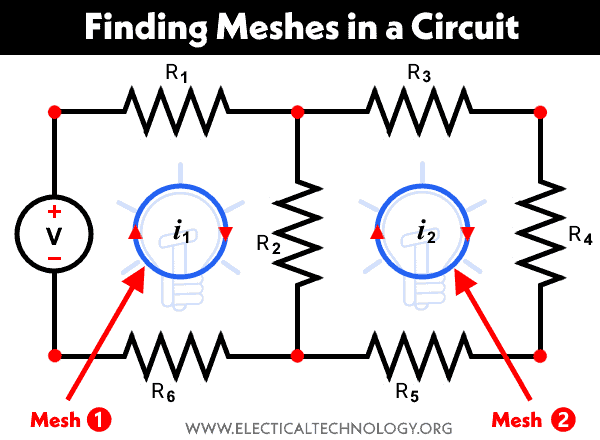
This way, there are two number of meshes in the circuit given in fig-5.
- Good to Know: A Loop can be Mesh, but Mesh can’t be a Loop.
Overall circuit given in fig-1 with 6 Nodes, 7 Branches, 3 Loops and, 2 Meshes shown in fig-6.
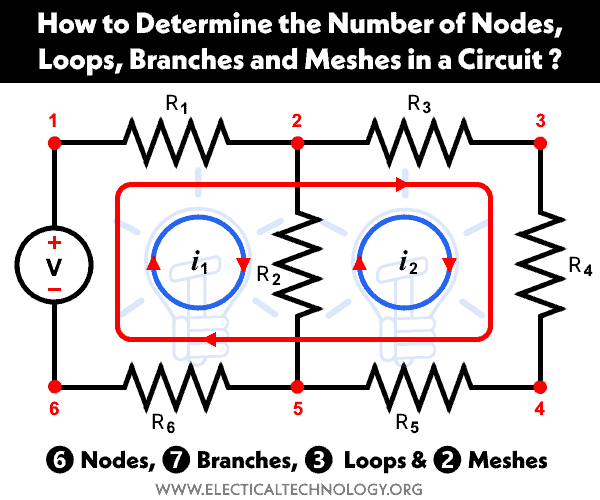
Related Posts:
- What is an Electric Circuit? Types of Circuits, Network & Parts Of Circuit
- The Main Difference between Linear and Nonlinear Circuit
- Difference between Unilateral and Bi-Lateral Circuits & Elements
- Difference between Active and passive Components
- Difference Between Current and Voltage
- Difference between AC and DC (Current & Voltage)
- What is Electric Current, its Unit, Formula, Types & Applications
- What is Voltage? its Unit, Formula, Types & Applications
- What is Resistance? Resistivity (ρ) & Specific Resistance Ω.
- What is Electrical Power? Types of Electric Power and their Units
- What is Electrical Energy? Its Unit, Formula & Applications
- What is Electricity? Types, Sources & Generation of Electricity
- What is Volt (V)? Unit in Electrical Engineering and Physics
- What is Ampere (A)? Unit in Electrical Engineering & Physics






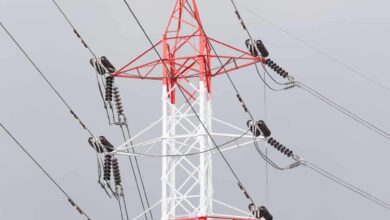
Or B = N + 1 i.e. Branches = Nodes + 1
e.g. Nodes = Branches – 1 i.e. N = B – 1
Branch
That the terms junction or point mean one and the same must be emphasized.
Above it says there are 3 loops in the circuit. But if you apply the loop formula L=B-N+1,we get
Loop= 7-6+1= 2 loops ,why??? Am i missing something here?
I was thinking of the same thing too